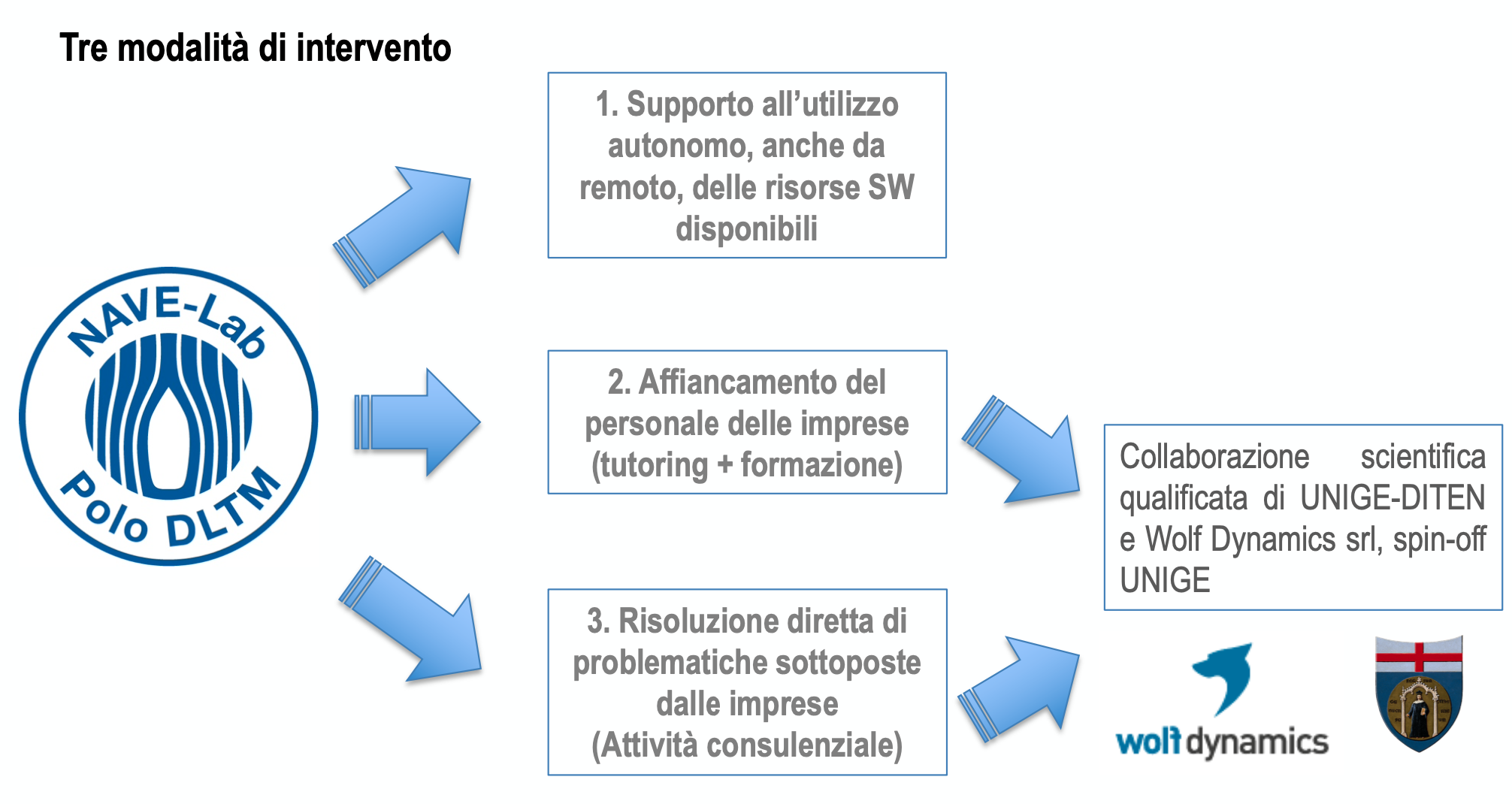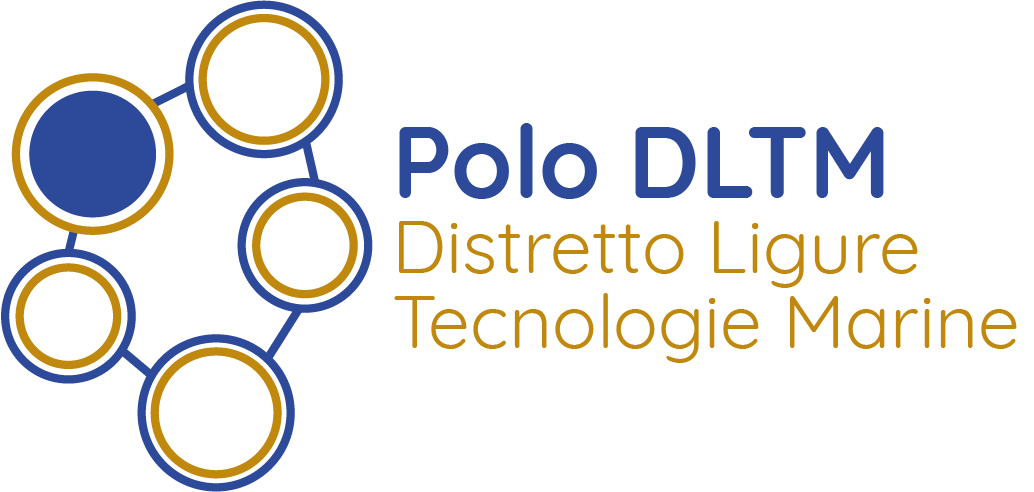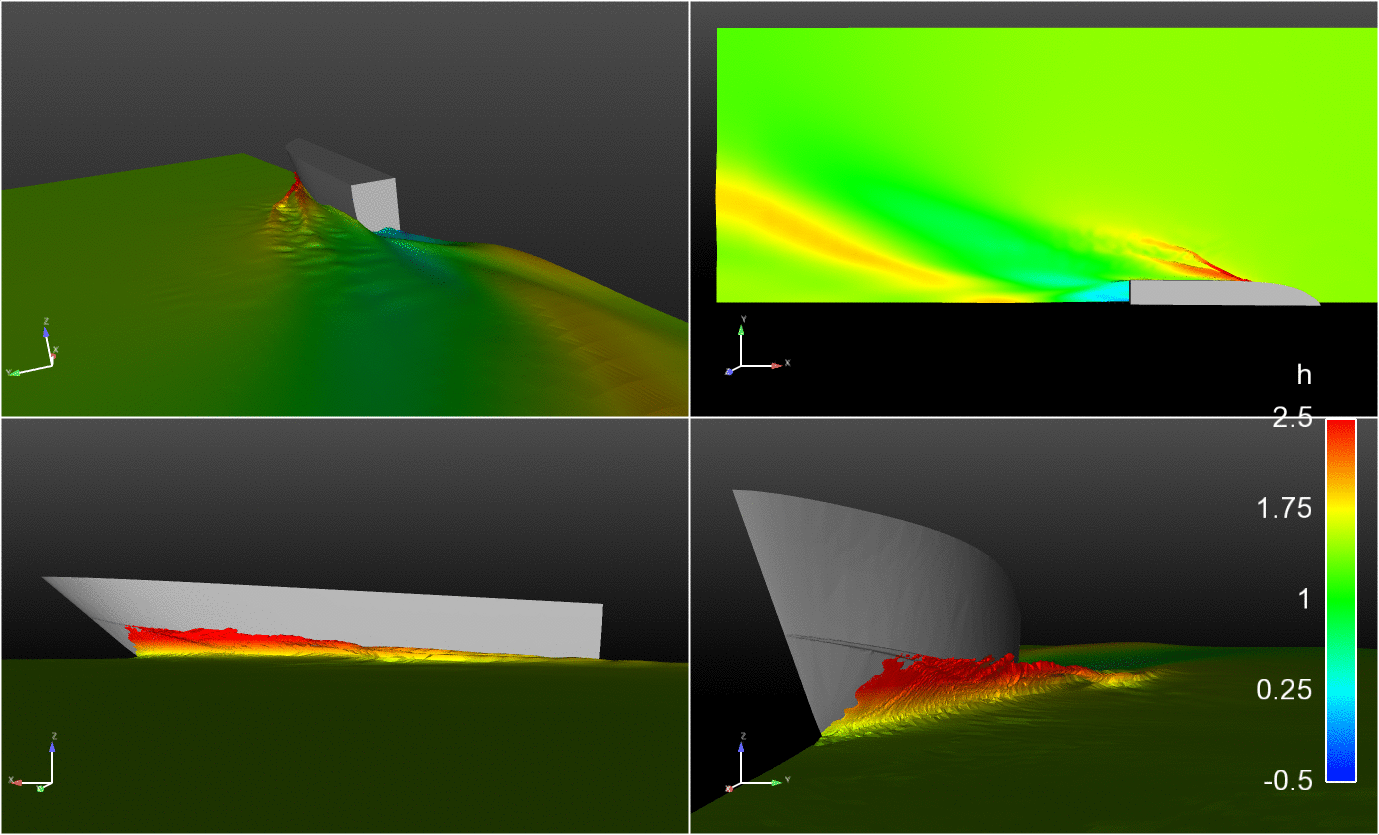Progettiamo la nautica del futuro!
Il Laboratorio NAVE concentra la propria attività sul supporto alle azioni innovative dei propri associati inerenti:
- Fluidodinamica computazionale (CFD)
- Calcolo strutturale con metodo ad elementi Finiti (FEM)
- Prototipazione e Stampa 3D
Il laboratorio è in grado di fornire un ampio ventaglio di opportunità ai propri associati, quali:
- Accompagnamento e assistenza specifica nell'utilizzo degli strumenti avanzati di simulazione numerica, commerciali e non, anche messi a disposizione tramite la piattaforma HPC come “Software as a Service”
- Attività di ricerca e sviluppo basate sull'applicazione di software libero (“Open Source”)
I Software messi a disposizione:
- Ansys CFD (CFX, Fluent)
- MSC Nastran, Patran, Marc
- CD-Adapco STAR-CCM+
- Open-FOAM

Il Laboratorio si pone come missione prioritaria , la realizzazione di brevetti, pubblicazioni scientifiche e il supporto a percorsi di Tesi di Laurea, in collaborazione con l’Università di Genova.
PUBBLICAZIONI
MARINE 2016 – “On the fluid dynamic design and optimization of sailing yacht hull and appendages using a complete open soure framework” (G.Bailardi, J.Guerrero)
Naval Architecture preserves both the sketching conceptualism and the engineering pragmatism. As a matter of fact, the heuristic approach behind a sailing yacht technology comes from a tangible amount of experience and knowledge. In this respect, Design and Analysis of Computer Experiments (DACE) represents an efficient tool for improving the overall knowledge on parameter dependency, while a Multi Objective Optimization easily reveal the best choice according to specific project constraints. In this work we propose a fully automated and parametric simulation framework, entirely based on Open Source technology. From an engineering and practical point of view, it is important to understand the real applicability of these tools on complex engineering tasks, such as evaluating the aero- and hydro-dynamic performance of sailing yachts. Due to its r eliability, scalability and cost effectiveness, the use of a simulation and optimization framework based on Open Source software represents an attractive option for engineers and designers looking for the best return-of-investment. In order to create the parametric geometry we use SALOME and OpenVSP, while mesh generation and fluid dynamics simulation are based on \OpenFOAM technology. The DACE optimization loop and the meta-models construction is done using DAKOTA.
NAV 2016 – “An Open Source Framework for CFD Optimization: the case of Sailing Yacht Daggerboards” (G.Bailardi)
Today, a large amount of Open Source software have been developed and from an engineering and practical point of view, it is important to understand the real applicability of these tools in performing and completing complex engineering tasks. In this work, the three-dimensional model to be studied, the domain discretization, the solution of the governing equations, and the data analytics have been performed entirely by using a simulation and numerical optimization framework based on Open Source technology. As parametric geometry modeler, the Open Vehicle Sketch Pad was employed, and for mesh generation we used the freely available CfMesh tool. The CFD simulations were carried out using OpenFOAM solver, while the numerical experiment and the subsequent Surrogate based Optimization was done by means of DAKOTA optimizer. For data post-processing and plotting we used Octave and Python.
SEAMED 2015- “Seakeeping analysis of sailing yacht hulls and center-board effect by BEM and CFD approaches” (G.Bailardi, D.Boote)
The seakeeping of a floating body, whether in motion or simply standing still, is recently becoming a crucial part in the design and the engineering process from large passenger ships to racing sailing yachts. Offshore structure as well, are influenced by motions induce by waves. Moreover, even if the importance of the experimental tests is still undoubtedly relevant, nowadays several numerical methods allow to predict, with more or less accuracy, the boat behavior in regular and irregular wave field.
INFORMAZIONI
- Davide Marini: Questo indirizzo email è protetto dagli spambots. È necessario abilitare JavaScript per vederlo.


